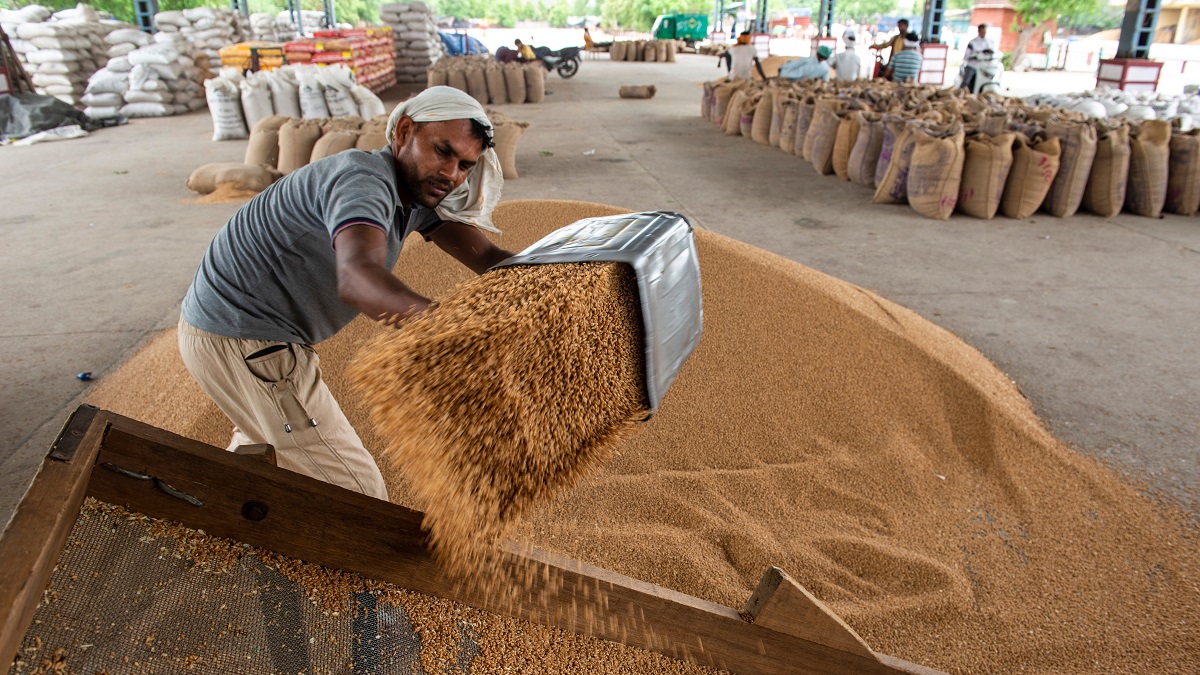The annual SDG Pulse provides analysis on how the world fares in achieving targets of the UN 2030 Agenda for Sustainable Development.
© Shutterstock/PradeepGaurs | A worker sorts wheat at wholesale grain market in New Delhi, India.
UNCTAD released on 27 June the fifth edition of its annual SDG Pulse, a global reference for tracking progress towards achieving the Sustainable Development Goals (SDGs) by 2030.
The data and analysis cover a wide range of SDG indicators and others relevant to trade, investment, financing for development, debt, transport and technology.
This year, the report’s “In-Focus” section looks into the costs of achieving the SDGs to identify where financing is most needed and to help better target efforts.
An online version allows people to interact with the statistics, charts and graphs.
The data shows that the COVID-19 pandemic, the war in Ukraine and the climate crises are having a devastating effect on progress towards the SDGs.
“We’ve reached the halfway mark of the 2030 Agenda, and multiple global crises are battering our economies, societies and the planet,” said Anu Peltola, who leads UNCTAD’s statistics work.
“It’s more important than ever for policymakers to have timely and reliable data and analysis to guide their decisions.”
Here are four key takeaways.
1. Soaring debt levels are holding back progress on many goals
About one in three countries worldwide faces a high risk of a fiscal crisis, with developing countries bearing the heaviest debt burden.
The total external debt for these nations was 15% higher in 2022 than in 2019, before the pandemic hit. During the past decade, their external debt stocks have more than doubled to an alarming $11.4 trillion.
The costs of repaying debts are the highest for low-income countries. In 2022, they spent about 19.3% of government revenue to service their debts – four times higher than in 2012.
Mounting public debt poses a significant obstacle to development and achieving the SDGs because it undermines governments’ ability to invest in basic services, such as health care and education.
2. The fight against hunger is losing ground
Between 2017 and 2021, the funding available per person in a food crisis fell by 30%.
Despite the world’s surplus of calories, seven in 10 economies import more food than they export. The Middle East and Africa are home to many net-importing nations – many of which are classified as least developed countries (LDCs).
Cereals, which have been in the spotlight due to the war in Ukraine, play a crucial role in the global supply of food, accounting for 45% of the calories available to the world’s population.
Although agricultural export subsidies are becoming a thing of the past – worth close to zero in 2021 compared with $3 trillion to $4 trillion nearly two decades ago – market-distorting policies are not.
Some countries may be at a disadvantage in international trade and risk becoming more food insecure as a result.
3. Climate resilience is at risk, vulnerable nations are in jeopardy
In 2021, greenhouse gas emissions again hit record levels, with carbon dioxide concentrations reaching their highest levels in 2 million years.
Despite the urgent need for a 45% reduction by 2030, emissions increased by 4.2% in 2021 and continue to climb. Additionally, high energy prices in 2022 have heightened vulnerabilities, with fuel prices peaking at nearly three times pre-pandemic levels in August 2022 and natural gas prices increasing ninefold.
LDCs and small island developing states (SIDS) face disproportionate risks from climate-related disasters, with a projected 40% increase in such events globally from 2015 to 2030, according to the UN Office for Disaster Risk Reduction (UNDRR).
On a positive note, global electric car sales leaped 55% in 2022, reaching 10 million units sold.
There’s an urgent need for further efforts to transition towards low-carbon economies. UNCTAD’s new data resources on biotrade, ocean trade and plastics trade provide a new tool to assess progress.
LDCs, LLDCs and SIDS experience the largest human and economic impacts of disasters.
4. Economic diversification remains a challenge for developing countries, digital technologies hold promise
Many developing economies continue to grapple with diversifying their trade portfolios.
In 2021, the 25 nations with the highest trade concentration index were all developing economies, indicating an over-reliance on just a handful of exports – mainly raw materials and commodities.
Meanwhile, manufacturing exports made up only one third of LDCs’ total merchandise exports in 2021.
The positive news is that the share of exports that are high-tech products is on an upward trend in Africa and LDCs.
Digital technologies offer many opportunities for economic diversification in a global economy that is increasingly digital. For example, digitally deliverable services now account for almost two thirds of all services exports worldwide.

